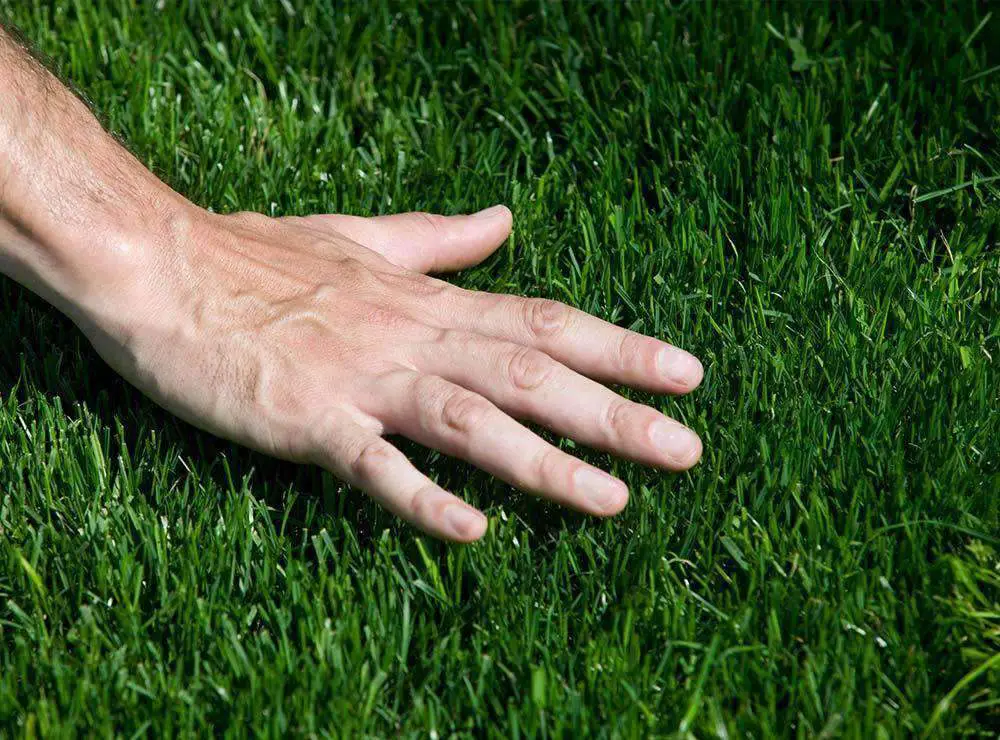Bermuda grass is a popular choice for lawns and sports fields due to its durability, resilience, and beautiful appearance. With its ability to withstand various climates and thrive in different conditions, Bermuda grass has become a top choice for many homeowners and landscapers. In this article, we will explore the different types of Bermuda grass, their characteristics, and factors to consider when choosing the right type for your needs.
When it comes to selecting the ideal turf, Bermuda grass offers a range of options to suit various environments and preferences. Whether you live in a hot and sunny climate or a region with cooler temperatures, there is a Bermuda grass type that can meet your requirements. Understanding the characteristics and differences between the various types will help you make an informed decision for your lawn or project.
What is Bermuda Grass?
Bermuda grass, scientifically known as Cynodon dactylon, is a warm-season grass that originated in Africa. It is known for its aggressive growth and ability to withstand heavy foot traffic. Bermuda grass is widely used for residential lawns, golf courses, parks, and athletic fields due to its tolerance to drought, heat, and wear.
Types of Bermuda Grass
Common Bermuda Grass
Common Bermuda grass (Cynodon dactylon) is the most widely planted variety and is often found in warm climates. It has a coarse texture and is known for its fast growth and ability to establish quickly. Common Bermuda grass is a popular choice for areas that experience heavy foot traffic, as it can recover quickly from wear and tear.
Hybrid Bermuda Grass
Hybrid Bermuda grass is a crossbreed of different Bermuda grass varieties, resulting in improved characteristics such as disease resistance, cold tolerance, and finer leaf texture. Popular hybrid Bermuda grass types include Tifway 419 and Celebration. These hybrids offer enhanced visual appeal, durability, and adaptability to a wider range of climates.
Improved Bermuda Grass
Improved Bermuda grass varieties have been developed through extensive research and breeding programs. These varieties exhibit improved traits such as disease resistance, cold hardiness, and shade tolerance. Some common improved Bermuda grass types include Tifgreen, Tifsport, and Tifway 2.
Characteristics of Bermuda grass types
Each type of Bermuda grass possesses unique characteristics that make it suitable for specific environments and applications. Here are some key factors to consider when choosing a Bermuda grass type:
Growth Habits
Bermuda grass types exhibit different growth habits, including spreading by stolons or rhizomes. Some varieties have a more aggressive growth pattern, while others are less invasive. Understanding the growth habits will help you determine the best type for your lawn maintenance preferences.
Color and Texture
Bermuda grass can vary in color and texture, ranging from light to dark green. Some types have a finer leaf texture, creating a softer and more luxurious appearance. Consider the visual appeal and texture you desire when selecting a Bermuda grass type.
Cold Tolerance
While Bermuda grass is known for its warmth and heat tolerance, certain varieties have been developed to withstand colder temperatures. If you live in a region with occasional frost or colder winters, choosing a Bermuda grass type with better cold tolerance is crucial for year-round greenery.
Drought Resistance
One of the key benefits of Bermuda grass is its ability to survive drought conditions. However, some varieties exhibit better drought resistance than others. If you live in an area prone to water scarcity or limited irrigation, selecting a Bermuda grass type with high drought resistance will ensure a lush lawn even during dry spells.
Best Bermuda Grass Types for Different regions
Bermuda grass types can be categorized based on the region and climate they are best suited for. Here are some recommendations for different regions:
Southern Regions
In the southern United States, where temperatures are consistently high, common Bermuda grass and hybrid varieties like Tifway 419 and Celebration thrive. These types are known for their exceptional heat tolerance and resilience to heavy foot traffic.
Coastal Areas
Coastal areas often have a more moderate climate, with cooler temperatures and higher humidity. Hybrid Bermuda grass varieties like Tifway 419 and Tifgreen are well-suited for these regions due to their ability to withstand coastal conditions and resist diseases commonly found in humid environments.
Transition Zones
The transition zone, which stretches across the middle of the United States, experiences a mix of warm and cool weather. Hybrid Bermuda grass varieties like Tifway 419 and TifSport perform well in this region, offering good adaptability to both warm and cool seasons.
Northern Regions
In northern regions with cooler climates, improved Bermuda grass varieties like Tifway 2 and Riviera excel. These types have better cold tolerance and can maintain their color and vigor even in colder temperatures.
Factors To Consider When Choosing Bermuda Grass
When selecting the right Bermuda grass type, consider the following factors:
Maintenance Requirements
Different Bermuda grass types have varying maintenance requirements. Some varieties may require more frequent mowing, fertilization, or pest control. Assess your available time and resources for lawn care to ensure you choose a Bermuda grass type that aligns with your maintenance capabilities.
Shade Tolerance
Bermuda grass is a warm-season grass that thrives in full sunlight. However, some varieties have better shade tolerance than others. If you have areas in your yard that receive partial shade, consider selecting a Bermuda grass type that can tolerate lower light conditions.
Wear Resistance
If your lawn or sports field will experience heavy foot traffic, selecting a Bermuda grass type with excellent wear resistance is crucial. Common Bermuda grass and hybrid varieties like Tifway 419 are known for their ability to recover quickly from wear and remain durable.
Planting and Caring for Bermuda Grass
Once you have selected the appropriate Bermuda grass type for your needs, it’s essential to understand the proper planting and care procedures. Follow these steps to ensure successful establishment and maintenance of your Bermuda grass:
Preparing The Soil
Before planting Bermuda grass, prepare the soil by removing any existing vegetation, rocks, or debris. Loosen the soil and amend it with organic matter to improve drainage and nutrient retention.
Seeding or Sodding
Depending on your preference and budget, Bermuda grass can be established through seeding or sodding. Seeding is more cost-effective but requires more time and effort for the grass to establish. Sodding provides instant results but is more expensive.
Watering and Fertilizing
During the establishment phase, Bermuda grass requires regular watering to promote root development. Once established, reduce watering frequency but provide deep watering sessions to encourage deep root growth. Fertilize the grass according to the recommended schedule and use a balanced fertilizer to ensure proper nutrition.
Mowing and Weed Control
Mow Bermuda grass at the recommended height, usually between 1 to 2 inches, depending on the variety. Regular mowing helps maintain the desired height and promotes lateral growth. Implement a weed control program to prevent invasive weeds from competing with the Bermuda grass.
Common Issues and Solutions
While Bermuda grass is generally a hardy and resilient turf, it can face certain challenges. Here are some common issues you may encounter and their solutions:
Pest and Disease Management
Bermuda grass can be susceptible to pests such as armyworms, grubs, and mole crickets. Implement a pest management program that includes regular inspection, proper cultural practices, and the use of appropriate insecticides when necessary. Additionally, common diseases like brown patch and dollar spot may occur, so monitor your lawn and treat with fungicides if needed.
Thinning or Bare Spots
If you notice thinning or bare spots in your Bermuda grass, consider overseeding with the same or compatible variety to fill in the gaps. Ensure proper soil preparation and follow recommended seeding practices for successful establishment.
Managing Overgrowth
Bermuda grass has a tendency to spread aggressively, encroaching on neighboring areas or garden beds. Regular edging and boundary maintenance can help control overgrowth and keep your lawn looking neat.
Conclusion
Choosing the right Bermuda grass type is crucial for achieving a beautiful and resilient lawn. Consider the growth habits, color and texture, cold tolerance, and drought resistance when making your selection. Assess the maintenance requirements, shade tolerance, and wear resistance based on your specific needs. By understanding the characteristics of Bermuda grass types and following proper planting and care procedures, you can enjoy a lush and vibrant lawn year-round.
FAQs
What is the best Bermuda grass type for a hot climate?
For hot climates, common Bermuda grass and hybrid varieties like Tifway 419 and Celebration are excellent choices. They have exceptional heat tolerance and can withstand the high temperatures common in hot regions.
Can Bermuda grass grow in shaded areas?
Bermuda grass is a warm-season grass that thrives in full sunlight. While it prefers direct sunlight, some improved Bermuda grass varieties have better shade tolerance than others. If you have shaded areas, consider selecting a Bermuda grass type known for its shade tolerance.
How often should I mow Bermuda grass?
he frequency of mowing Bermuda grass depends on the growth rate, which can vary depending on the type and environmental conditions. As a general guideline, mow Bermuda grass when it reaches one-third higher than the recommended mowing height. This typically translates to mowing every 5-7 days during the active growing season.
Is Bermuda grass drought-tolerant?
Yes, Bermuda grass is known for its drought tolerance. However, some varieties exhibit better drought resistance than others. When selecting a Bermuda grass type, consider its ability to withstand prolonged periods of water scarcity and limited irrigation.
Can I plant Bermuda grass in sandy soil?
Bermuda grass is well-suited for sandy soil, as it has good drainage capabilities. However, it’s essential to prepare the soil properly by adding organic matter to improve nutrient retention and moisture-holding capacity. Ensure regular watering and proper fertilization to support the growth of Bermuda grass in sandy soil.








